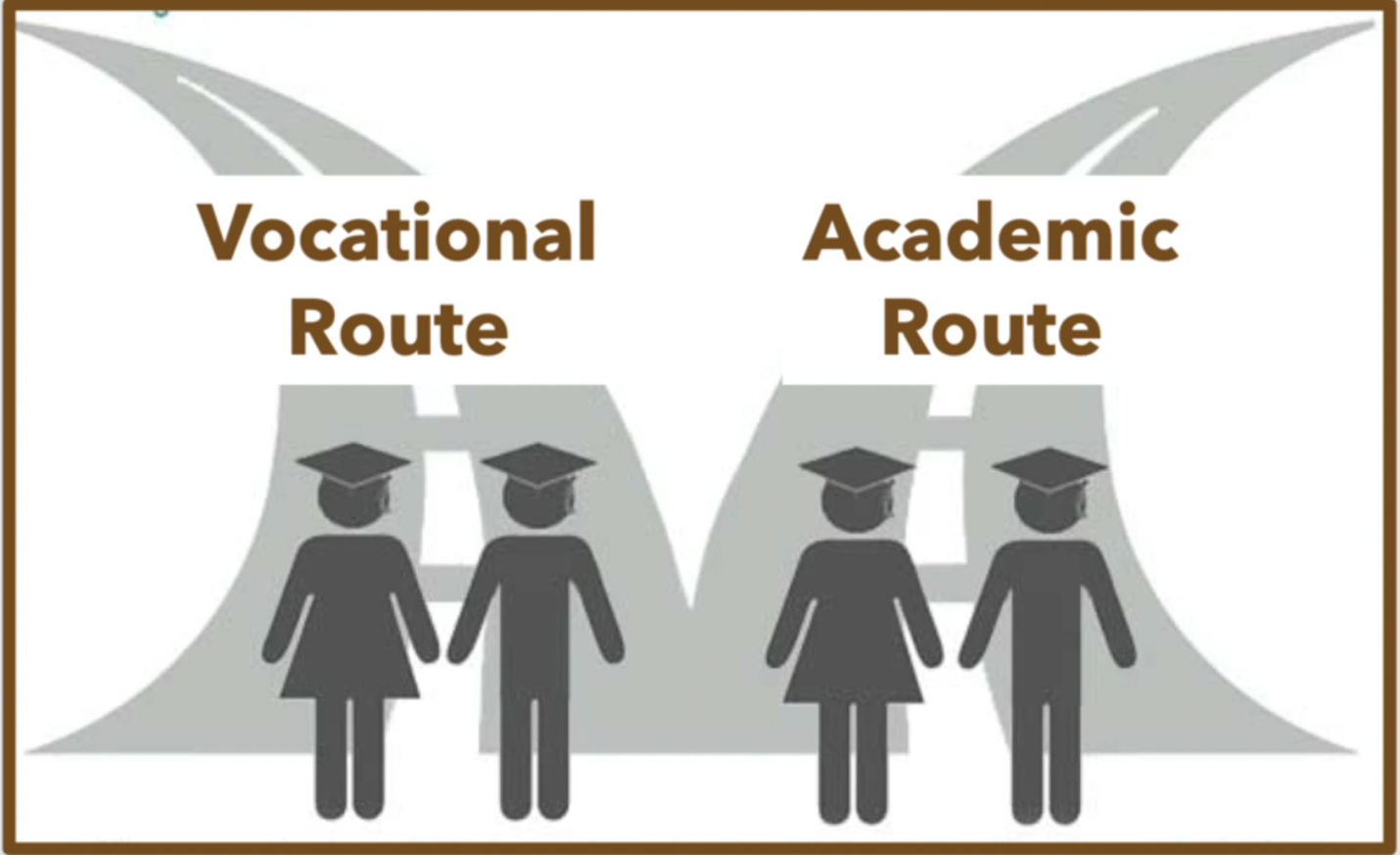Whether They Go to College or Not”
 “Whether they go to college or not.” With those seven little words, President Biden marked a clear shift in higher education rhetoric in his 2023 State of the Union Address. However, he did more than emphasize work over education, with that phrase preceded by “let’s offer every American the path to a good career”. He further re-framed the primary purpose of community college, positioning it as a gateway to career pathways, with the possibility of bachelor’s degree attainment as ancillary. His exact words? “Let’s finish the job, connect students to career opportunities starting in high school and provide two years of community college, some of the best career training in America, in addition to being a pathway to a four-year degree.”
“Whether they go to college or not.” With those seven little words, President Biden marked a clear shift in higher education rhetoric in his 2023 State of the Union Address. However, he did more than emphasize work over education, with that phrase preceded by “let’s offer every American the path to a good career”. He further re-framed the primary purpose of community college, positioning it as a gateway to career pathways, with the possibility of bachelor’s degree attainment as ancillary. His exact words? “Let’s finish the job, connect students to career opportunities starting in high school and provide two years of community college, some of the best career training in America, in addition to being a pathway to a four-year degree.”
Does this shift to the four-year degree as an afterthought matter? I argue that it does, and base that on research in my 228-page dissertation, which has been made publicly available for free at this link. Presidential discourse about college access should not be underestimated as contributing to where the nation is headed in terms of its education system writ large.
A defense of alternate pathways, in particular CTE—Career and Technical Education—found a powerful renaissance funded by more than $1.2 billion in federal monies flowing into school districts in recent years even as college access remained constrained. Certainly, the U.S. needs vocational pathways for millions of students, but now is not the time to abandon the four-year degree ship. Cross-national corporate implications as jobs move from shore to shore in an increasingly digital economy contribute to the strain of global economics. This is not just about individual preferences and aspirations. Larger implications loom.
Noted education researcher Raj Chetty once asked whether the United States was still a land of opportunity. That question today has two answers: (too often) no and (potentially) yes. The alarming state of the college access landscape continues to decline, with decreasing confidence in the value of a college education permeating public discourse seen across media outlets. Applicants from socioeconomically disadvantaged populations wrestle with the real-life implications of taking on significant student debt, while increasing numbers of high-prestige institutions incorporate financial hurdles. Most recently, this has entailed more policies preferring admittance of Early Decision applicants who pay full tuition. Additionally, many selective schools continue to place a thumb on the admissions scale for students submitting exam scores despite pandemic-inspired “test optional” policies. Disturbingly, research shows that optional-to-apply doesn’t always mean optional-to-get-admitted.
Additionally, the fact that merit aid so needed by marginalized students often remains tethered to scores on SAT or ACT exams adds insult to injury. Wealthier students can afford to tutor for these, and need the aid less, but in America’s commodified college ecosystem, the hurdles are real. Opportunity exists, of course—the problem is that it’s for sale to the highest bidder. Add in ChatGPT and other digital disruptors, the ongoing student debt forgiveness controversy, and nefarious “nonprofit” players syphoning money and skewing policy as they operate, and this becomes more than a problem. This is not about elitist intellectualism; a sufficiently educated populace helps sustain democracy.
Local school districts require support at the state and federal levels but often lack funding. The college access equation impacts not only the U.S., but the world, and districts are on the front lines of a major battle. With decreasing populations of well-trained teachers and increasing class sizes among a myriad of other challenges, administrators seeking to level the local playing field need help. Ongoing state disinvestment and other systematic markers in these times of late-stage capitalism have done more than exacerbate student debt; the compounding realities have created a greed-driven free-for-all. While universities have been hiking tuition, for-profit companies have flooded the market with admissions solutions that have been either tried-and-tossed or largely rebuffed, leading to an edtech backlash among not only parents but also venture capitalists and angel investors. Educational enhancement services promise to help bring college access within reach, but without live, human mentorship such hyperbole rings hollow. Nonprofits contribute within geographically constrained pockets of influence and have become a de facto kind of duct tape. The luckiest students in America are those with access to an organized network of allies equipped with affordable way to help them aspire. Students from most middle class and lower-class backgrounds require one-on-one support to successfully navigate the admissions process. College eligibility is far easier to attain than college access, and true college readiness is harder still.
Perhaps it’s no surprise that President Biden seems to be recasting his vision for what is attainable, sustainable, and prudent. After all, the last thing America needs is more student debt with fewer students able to secure careers that justify the return on investment for pricey degrees. That said, I do not believe in an American dream that devalues higher education. I am fighting for the day we can secure the benefits of a four-year college degree, with its fruit of critical thinking and the joys of the life of the mind, for students from all socioeconomic backgrounds.
